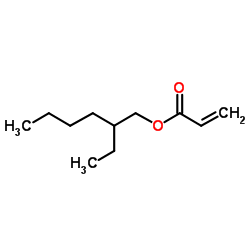Impregnation of an intraocular lens for ophthalmic drug delivery.
Ana Rita C Duarte, Ana Luisa Simplicio, Arlette Vega-González, Pascale Subra-Paternault, Patrícia Coimbra, M H Gil, Herminio C de Sousa, Catarina M M Duarte
Index: Curr. Drug Deliv. 5(2) , 102-7, (2008)
Full Text: HTML
Abstract
In this work the possibility of impregnating P(MMA-EHA-EGDMA) with flurbiprofen using a clean and environmentally friendly technology, namely supercritical fluid technology was evaluated. P(MMA-EHA-EGDMA) has been proposed as a promising matrix to be used for intraocular delivery of anti-inflammatory drugs used in eye surgery and flurbiprofen is a non-steroidal anti-inflammatory agent. Fundamental studies like, the solubility of the drug in carbon dioxide, as well as the sorption degree of this polymeric matrix in the presence of carbon dioxide have been previously carried out. The aim of this research was to evaluate the effects of these two variables in the impregnation process. Different experimental conditions were tested and the results obtained suggest that the best impregnating conditions for this system are low temperatures and pressures, which at the same time correspond to a lower solubility of the drug in the supercritical fluid and a low swelling of the polymeric matrix. Experiments performed also indicate that the batch impregnation process leads to higher yields of impregnation and according to the release profiles obtained the drug can be released from the matrix up to three months, which presents great advantages for post-surgical treatments.
Related Compounds
| Structure | Name/CAS No. | Molecular Formula | Articles |
|---|---|---|---|
 |
2-Ethylhexyl acrylate
CAS:103-11-7 |
C11H20O2 |
|
Development and application of a non-targeted extraction met...
2014-01-01 [Food Addit. Contam. Part A. Chem. Anal. Control. Expo. Risk Assess. 31(12) , 2090-102, (2014)] |
|
Prediction of the reduced glutathione (GSH) reactivity of de...
2009-11-01 [Dent. Mater. J. 28(6) , 722-9, (2009)] |
|
The potential dermal irritating effect of residual (meth)acr...
2010-01-01 [Drug Chem. Toxicol. 33(1) , 1-7, (2010)] |
|
Plasma-induced polymerization for enhancing paper hydrophobi...
2013-01-30 [Carbohydr. Polym. 92(1) , 928-33, (2013)] |
|
Dermal oncogenicity study of 2-ethylhexyl acrylate by epicut...
1989-01-01 [J. Cancer Res. Clin. Oncol. 115(6) , 543-9, (1989)] |